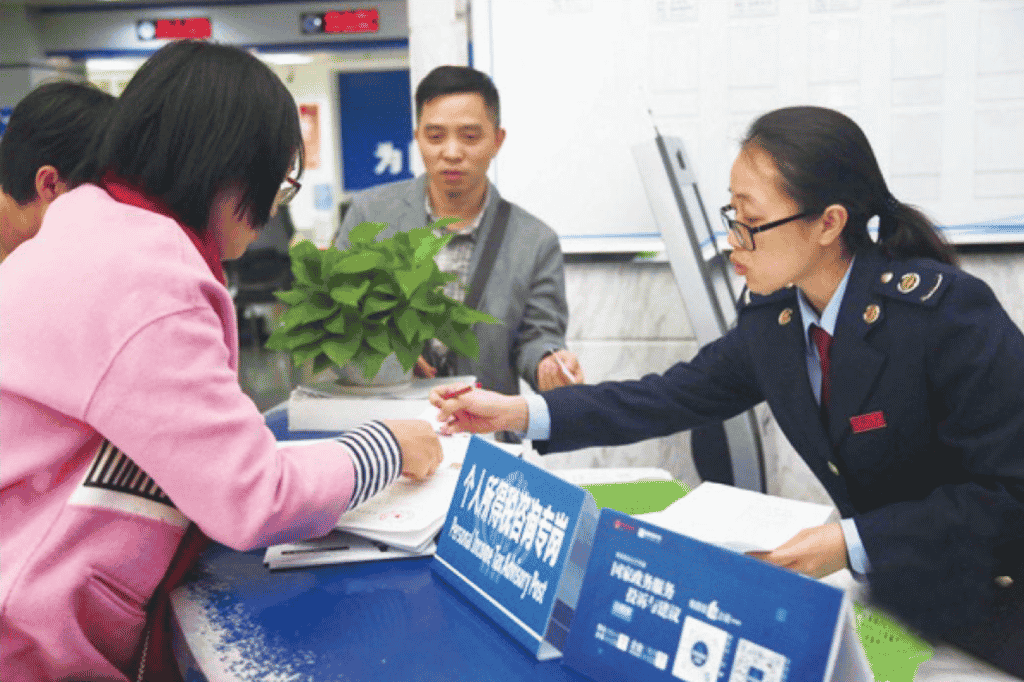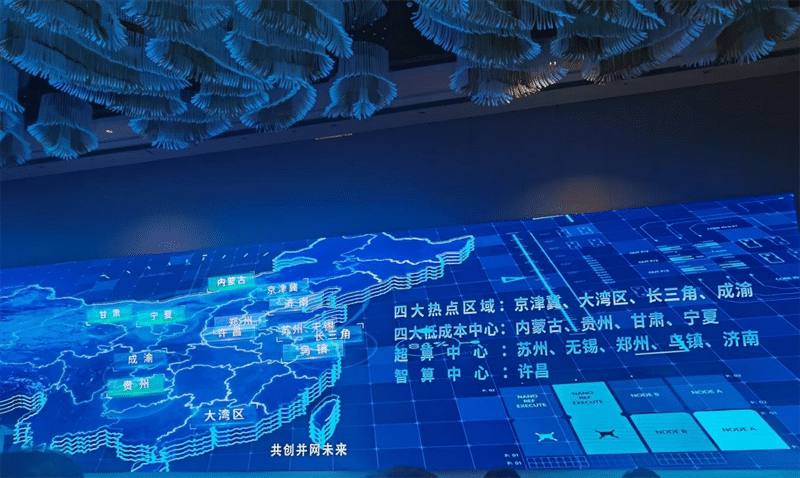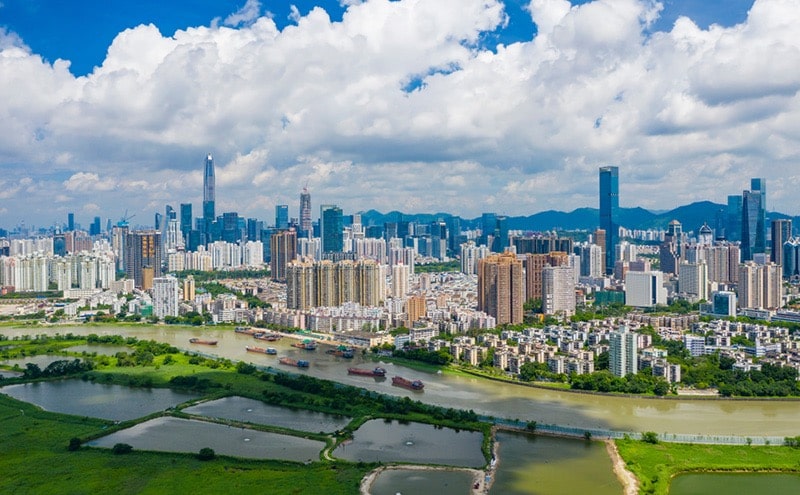The mainland has successively introduced a number of measures to benefit Hong Kong, including establishing new residence permits, exempting employment permits, allowing "Hong Kong residents to pay Hong Kong tax" and paying housing provident funds, etc., promoting the four core cities of Hong Kong, Macao, Guangzhou and Shenzhen to become the core cities of the Guangdong-Hong Kong-Macao Greater Bay Area. Regional development engine.Correspondingly, Hong Kong's political and business circles have spared no effort to promote the prospects of the Greater Bay Area.However, just like the integrated development of the two places advocated in the past, it is often "the government is hot and the people are cold".Can Hong Kong youth seize development opportunities?Over the past year, academic circles and think tanks have published many research reports and public opinion surveys on the Greater Bay Area. This article focuses on the development status of Hong Kong youth in other cities in the region. By sorting out the survey results, it analyzes their attitudes and understands the challenges they face. concerns and difficulties, in order to bring enlightenment to policy makers.
More and more Hong Kong youths are studying in Guangdong, and policies encourage career development
The Guangdong-Hong Kong-Macao Greater Bay Area plan aims to build an international science and technology innovation center, with innovation as the main axis and a focus on youth entrepreneurship. Since the announcement of the Government Work Report of the State Council in 2017, key cooperation zones have attracted many companies to develop. The number of Hong Kong and Macao companies in Nansha increased from 1,368 in 2017 to 2,872 in 2018, an increase of 1,504; Hong Kong-funded companies in Qianhai The number increased from 8,146 in 2017 to 10,800 in 2018, with an increase of 2,654. According to figures from the Census and Statistics Department, the number of Hong Kong youths aged 15 to 24 and 25 to 44 staying in Guangdong Province increased from 24,500 and 70,100 in mid-2017 to 26,400 and 72,600 in mid-2018 respectively. Although they only account for about three thousandths of their respective age groups in terms of Hong Kong’s population, they are the only two age groups that have continued to grow in proportion in recent years (Figure 1). It can be seen that young people have taken the first step towards opportunities in the Greater Bay Area. step.
After this good start, governments at all levels formulated comprehensive policies to continue this momentum of innovation and entrepreneurship. At the beginning of this year, the Guangdong Provincial Government’s No. 1 Document “12 Articles of Science and Technology Innovation” attempted to break down institutional barriers and take the lead in stimulating innovation vitality. Later, the "1+12+N" incubation platform carrier layout was promoted, with the Guangdong-Hong Kong-Macao Greater Bay Area (Guangdong) Innovation and Entrepreneurship Incubation Base as the leader, plus 12 municipal-level bases, and a number of entrepreneurial spaces built by each locality. Among the municipal bases, Guangzhou accounts for 3 (one of which is jointly built with Jiangmen), Shenzhen and Zhongshan have 2 each, and the remaining five cities have 1 each. In order to encourage young people from Hong Kong and Macao to settle in Shenzhen, the local government provided start-up subsidies and listing incentives in April, and also reduced the costs of starting a business, financing loans, and cross-border transportation. Guangzhou established a venture fund with a quota of 1 billion yuan in May, focusing on investing in start-up projects.
In addition to establishing a good entrepreneurial environment for young people from Hong Kong and Macao, cities in the region also provide employment and internship opportunities in other industries. For example, Guangzhou has begun to call on state-owned enterprises and institutions, private and foreign-funded enterprises to reserve no less than 3,000 jobs and 2,000 internship positions every year, hold recruitment activities in Hong Kong and Macao, and admit Hong Kong and Macao students in Guangzhou universities. The fields will focus on high-tech industries such as new generation information technology, artificial intelligence, biomedicine, and smart cars, as well as knowledge-based industries such as finance, law, accounting, and cultural creativity. Shenzhen has a talent reward and training program to actively develop the financial industry, and also encourages enterprises and institutions in Qianhai to recruit young people from Hong Kong and Macao. Subsidies will be provided for recruiting interns and graduates from Hong Kong and Macao, and young professionals with professional qualifications from Hong Kong and Macao will also be hired. There is funding.
Support development opportunities and worry about losing competitive advantage
Surveys show that the development of the Greater Bay Area is supported by all Hong Kong citizens. Due to the benefits of recent policies, some citizens have already joined the cities in the region and integrated into the overall development of the country. Democratic Thoughts conducted two rounds of "One Country, Two Systems Index" surveys in 2018. With a perfect score of 10, the average score of citizens' support for Hong Kong's participation in the development of the Greater Bay Area exceeded 6 points, although it dropped slightly from 6.3 points in the middle of the year to 6.27 points at the end of the year. The overall trend is still supportive. Public opinion generally believes that young people are more opposed to the development of the Greater Bay Area. However, there is no statistically significant difference in average scores between different age groups. This, coupled with the aforementioned demographic evidence, is enough to negate this view. A survey by the Hong Kong Asia-Pacific Institute of the Chinese University of Hong Kong also recorded a similar level of support. The number of citizens who believe that Hong Kong's participation in the Greater Bay Area has "more benefits" increased from 25.4% in 2017 to 30.5% in 2019, which is almost "there are many disadvantages". "Some" three times as many times, and the most popular choice was "Mixed", which remained about half.
Although they agree with the development of the Greater Bay Area, Hong Kong citizens have certain concerns about personal opportunities, which makes them always hold a wait-and-see attitude towards development northward. A survey by the Asia Pacific Institute shows that 53.8% citizens this year believe that Hong Kong people have "little" or "no" development advantages in the Greater Bay Area, an improvement from 57.2% a year ago, and that Hong Kong people have "quite a lot" Or "very large" development advantage increased from 28.7% to 30.3%, but there was no statistically significant relationship. Research conducted by the Graduate School of Lingnan University and the Hong Kong, Macao and Pearl River Delta Research Center of Sun Yat-sen University also shows that 43% of Hong Kong people surveyed are worried that they will not be able to enjoy the social welfare in Hong Kong when living in the Greater Bay Area, and 36% are worried that they will not be able to find it. The right job.
This attitude of being optimistic about the macro environment but pessimistic about one's own development also resonates with young people. The Hong Kong Federation of Youth Groups' "Youth Entrepreneurship Research Database" found that Hong Kong youth generally agree that the construction of the Greater Bay Area will be helpful to "Hong Kong's overall economic development" and "career development opportunities for Hong Kong youth", with more than 70% in both categories. However, when it comes to their own career development, about 40% believe that it will "increase employment opportunities", while a similar number of young people think that they will "face greater competition" (Table 1). Some interviewees expressed concerns that Hong Kong young people may have certain difficulties in adapting to the mainland's working environment and workplace culture, including learning local systems and ways of doing things, in order to gain a better competitive advantage.

Young people are becoming more positive and traveling every week
The Greater Bay Area has become a hot topic in society, and young people are less resistant to returning to the mainland for development. According to a survey conducted by Democratic Thinking in mid-2018, only 8.1% youth would consider living or developing in other cities in the Greater Bay Area, which is the age group with the lowest proportion (Table 2). Six months later, the attitude of young people suddenly changed to 14.91 TP3T is willing to consider, which is the age group with the highest proportion. In the past six months, young people's willingness to go north has climbed from the lowest to the highest, and the net unwillingness has dropped significantly by 19 percentage points, a statistically significant decline. The Hong Kong Youth Dynamics Association also asked the interviewed youth associations whether they would consider developing in the Greater Bay Area. Among those who did not consider it, more than half said they did not know what the Greater Bay Area was about, and the remaining 40% did not want to be too far away from Hong Kong. This result reflects that many people have given up on going north to develop because they do not understand it. Therefore, more publicity and explanations can ignite the enthusiasm of young people.
No matter where they are, there are always a small number of people who are willing to live, study, work or retire in other places. The "Youth Entrepreneurship Research Database" shows that young people who are willing to "frequently travel to and from work" and "work long-term" in the nine cities of the Pearl River Delta are There are 30%, which is a considerable proportion. The Census and Statistics Department has published a special report on Hong Kong residents who go to work in the Mainland, which shows a mobile work pattern: the median number of times they travel to and from the Mainland a year is 48 times, and nearly 90% say that each stay does not exceed seven days. A study by Minghui Think Tank and the Hong Kong Guangdong Youth Association points out that today's young people also have similar choices: those who are willing to work in Guangdong Province tend to stay for less than three years and return to Hong Kong on weekends to gather with family and friends. Fewer people choose Live in the province for a long time. After the opening of the high-speed rail and the opening of the Hong Kong-Zhuhai-Macao Bridge, the commuting time between Hong Kong and neighboring cities has been greatly shortened, making cross-border work patterns more feasible.

Plan for cross-regional talent supply and demand
When we encourage young people in Hong Kong to gain experience in China, other cities are also competing for talent, and cross-regional human resource allocation is easily overlooked. Minghui Think Tank and the Hong Kong Guangdong Youth Association mentioned a phenomenon worth noting: There is a certain relationship between academic qualifications and the intention to go north. Respondents who graduated with an associate degree are most willing to develop in the Greater Bay Area. However, as their education level improves, their desire to develop in the Greater Bay Area gradually decreases. It seems that young people with associate degrees are more eager to achieve breakthroughs in their careers in the Greater Bay Area. The "One Country, Two Systems Youth Forum" compared the median wages of Hong Kong graduates from the Mainland working in the Mainland and Hong Kong. The former earned 44% less than the latter. Even with various subsidies, the gap in salary levels is believed to be one of the reasons why talents with higher academic qualifications choose to work in Hong Kong and do not consider the opportunities in the Greater Bay Area as their first choice.
Cities in the region have a greater demand for high-level talents with certain industry status and professional qualifications than college graduates. Nansha New Area has launched a talent green card, which allows non-household registered talents to enjoy the treatment of local citizens based on key industries such as technological innovation, finance and shipping, as well as academic qualifications. Qianhai provides financial subsidies for personal income tax based on market-based identification principles recognized by the industry and recognized by society, including income and position. The high-end talents and in-demand talents recognized by mainland cities have considerable requirements for achievement, experience or academic qualifications, which are somewhat different from the job-hunting mentality of young people in Hong Kong. Guangzhou is striving to become a pilot project for the mutual recognition of college degrees between Hong Kong and Macao universities. It is a worthy start and is expected to improve the ladder connecting degree and vocational education. If there is a mismatch between talent supply and demand in the future due to lack of planning, it will only bring frustration to young people who are determined to go north to make a career and create even bigger problems.
Which expertise and skills are most sought after by Hong Kong youth in the Greater Bay Area still needs to be studied and discussed, but some clues may be gleaned from their employment status in other cities in the region. A survey conducted by Minghui Think Tank and the Hong Kong Guangdong Youth Association shows that more than half of Hong Kong students who graduated from mainland institutions are willing to stay in Guangdong Province for development, far more than one-fifth of Hong Kong graduates. Hong Kong job seekers in the province are believed to be mainly composed of mainland graduates. Their career paths can reveal the needs of the labor market and serve as a reference for other young Hong Kong people. The "One Country, Two Systems Youth Forum" explained that the main careers for Hong Kong students graduating from the mainland are healthcare, finance, professional services, education and media. These are Hong Kong's strongest professional fields, and they are also the industries in which Hong Kong young people have the most advantages based on their language skills, professional ethics and international perspective. Opportunities in the Greater Bay Area should not only tell a vibrant entrepreneurial story, but also emphasize the competitiveness of Hong Kong youth in high value-added service industries, create space for Hong Kong youth and open the door to opportunities.
Song Enrong is deputy director of the Economic Research Center of the Institute of Asia-Pacific Studies at the Chinese University of Hong Kong.
Pan Xuezhi is an associate researcher at the Shanghai-Hong Kong Development Institute of the Chinese University of Hong Kong.
references:
1. The "One Country, Two Systems Index" of democratic thinking entrusts the Hong Kong Asia-Pacific Institute of the Chinese University of Hong Kong to conduct a random sample telephone survey every six months, interviewing 1,004 people from May to June 2018 and 1,001 people aged 18 or above in December 2018. of Hong Kong residents.
2. The Hong Kong Asia-Pacific Institute of the Chinese University of Hong Kong conducted a random sample telephone survey, interviewing 723 people in May 2017, 714 people in May 2018, and 703 Hong Kong citizens aged 18 or above in March 2019.
3. The "Hong Kong Residents' Perception and Evaluation of the Development of the Greater Bay Area" research conducted by the Graduate School of Lingnan University and the Hong Kong, Macao and Pearl River Delta Research Center of Sun Yat-sen University commissioned the Public Governance Research Department of Lingnan University to conduct a random sampling telephone survey in August 2018. Monthly interviews include 1,033 Hong Kong residents aged 18 or above.
4. The "Removing Obstacles for Hong Kong Youth to Develop Careers in the Guangdong-Hong Kong-Macao Greater Bay Area" of the Hong Kong Federation of Youth Groups' "Youth Entrepreneurship Research Database" commissioned Consumer Search Group to conduct on-site interviews. In January 2019, 522 people aged 18 to 39 who were working or working were interviewed. Unemployed Hong Kong residents.
5. The Hong Kong Youth Dynamics Association conducted the "Youth Employment Intention Survey" and interviewed 878 Hong Kong youth who were studying and working in Hong Kong and the Mainland from March to April 2018.
6. Census and Statistics Department (2011). "Special Report No. 57: Hong Kong Residents Working in Mainland China". October. Hong Kong: Census and Statistics Department.
7. The "Hong Kong Youth Guangdong-Hong Kong-Macao Greater Bay Area Development Index 2018" by Minghui Think Tank and the Hong Kong Guangdong Youth Federation conducted on-site interviews with 809 Hong Kong youth aged 15 to 39 in Hong Kong in August 2018, and conducted on-site interviews with 809 Hong Kong youth aged 15 to 39 in Hong Kong from September 2018 to In October, 561 questionnaires from Hong Kong youth in Guangdong Province were collected on the online platform.
8. The One Country, Two Systems Youth Forum's "Research on the Career Paths of Hong Kong Students Graduating from Mainland Colleges and Universities" used an online questionnaire to collect 317 questionnaires from Hong Kong graduates from Mainland China who had graduated 0 to 5 years ago from November 2018 to January 2019.



